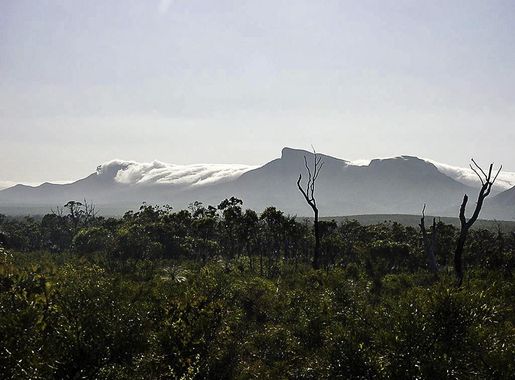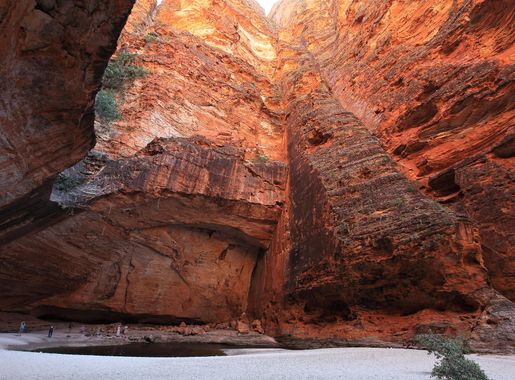
The Enigmatic Bungle Bungle Range
Discover the awe-inspiring Bungle Bungle Range in Western Australia, with its unique beehive-shaped domes, rich cultural heritage, and stunning natural landscapes.
The Bungle Bungle Range, located in the remote Purnululu National Park of Western Australia, is a mesmerizing natural wonder. This unique landscape is renowned for its distinctive beehive-shaped, orange and black striped domes. These formations, created by the erosion of ancient sandstones over millions of years, are a sight to behold and offer a glimpse into the Earth's geological past. Exploring the Bungle Bungle Range provides an opportunity to immerse yourself in a pristine wilderness. The park is home to a diverse range of flora and fauna, making it a haven for nature lovers. Walking trails like the Cathedral Gorge and Echidna Chasm lead you through narrow canyons and past towering rock walls, revealing hidden oases and spectacular views. For those seeking adventure, helicopter flights over the range offer a breathtaking perspective of the intricate patterns and rugged beauty of the landscape. The Bungle Bungle Range is not just a visual feast; it is a place of cultural significance to the Indigenous people of the region. Their stories and heritage add a rich layer of history and meaning to this extraordinary destination.
Local tips in Bungle Bungle Range
- Visit during the dry season (April to October) for the best weather and accessibility.
- Wear sturdy hiking boots and bring plenty of water for the walking trails.
- Consider a helicopter tour for an unforgettable aerial view of the range.
- Check for any necessary permits or park fees before you go.
- Respect the cultural significance of the area by following guidelines and not disturbing sacred sites.
The Enigmatic Bungle Bungle Range
The Bungle Bungle Range, located in the remote Purnululu National Park of Western Australia, is a mesmerizing natural wonder. This unique landscape is renowned for its distinctive beehive-shaped, orange and black striped domes. These formations, created by the erosion of ancient sandstones over millions of years, are a sight to behold and offer a glimpse into the Earth's geological past. Exploring the Bungle Bungle Range provides an opportunity to immerse yourself in a pristine wilderness. The park is home to a diverse range of flora and fauna, making it a haven for nature lovers. Walking trails like the Cathedral Gorge and Echidna Chasm lead you through narrow canyons and past towering rock walls, revealing hidden oases and spectacular views. For those seeking adventure, helicopter flights over the range offer a breathtaking perspective of the intricate patterns and rugged beauty of the landscape. The Bungle Bungle Range is not just a visual feast; it is a place of cultural significance to the Indigenous people of the region. Their stories and heritage add a rich layer of history and meaning to this extraordinary destination.
When is the best time to go to Bungle Bungle Range?
Iconic landmarks you can’t miss
El Questro Emma Gorge Resort
Experience luxury and adventure at El Questro Emma Gorge Resort, where breathtaking landscapes meet unparalleled comfort in the heart of the Kimberley.

Ivanhoe Crossing
Experience the breathtaking views and rich wildlife at Ivanhoe Crossing, a must-visit destination in Kununurra, Western Australia.
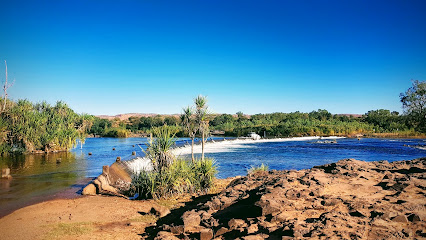
Purnululu National Park
Explore the stunning Bungle Bungle Range and rich wildlife of Purnululu National Park, a UNESCO World Heritage site in Western Australia.
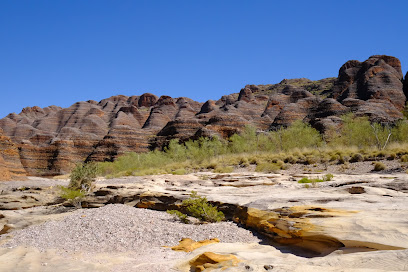
Argyle Homestead Museum
Explore the Argyle Homestead Museum, a captivating journey through historical artifacts and stories that bring Western Australia's heritage to life.
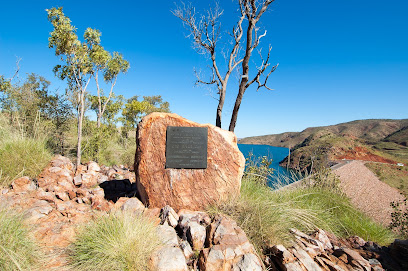
Danggu Gorge National Park
Explore the stunning landscapes and rich biodiversity of Danggu Gorge National Park in Western Australia, a must-visit destination for nature lovers and adventurers.
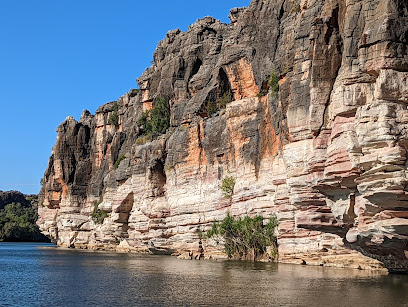
Bandilngan (Windjana Gorge) National Park
Experience the breathtaking landscapes and rich wildlife of Windjana Gorge National Park, a gem in Western Australia's King Leopold Ranges.
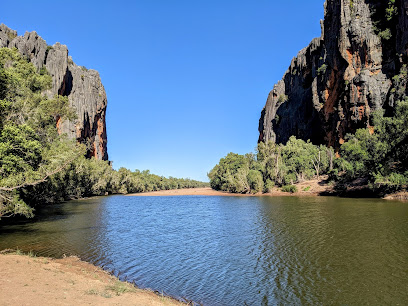
Bunjil's Shelter
Immerse yourself in the rich Indigenous heritage at Bunjil's Shelter, a stunning historical landmark in Victoria's Black Range, showcasing ancient rock art.
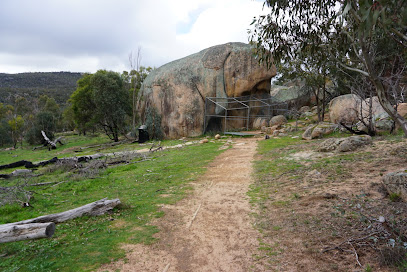
Bungle Bungle Caravan Park & Tour Company
Explore the breathtaking landscapes and unique experiences at Bungle Bungle Caravan Park & Tour Company, your gateway to adventure in Western Australia.
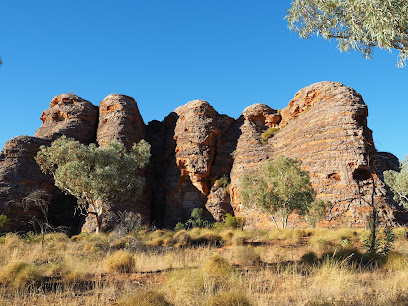
Kelly's Knob / Thegoowiyeng
Discover the serene beauty and stunning views at Kelly's Knob in Kununurra, a perfect escape for nature lovers and adventure seekers.
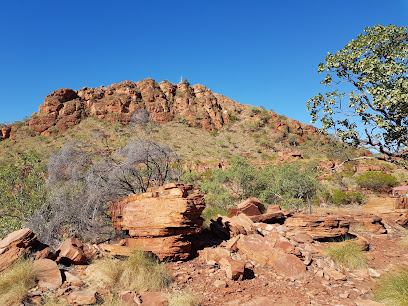
Home Valley Station
Experience the breathtaking beauty and cultural richness of Home Valley Station in the heart of Western Australia's stunning Kimberley region.
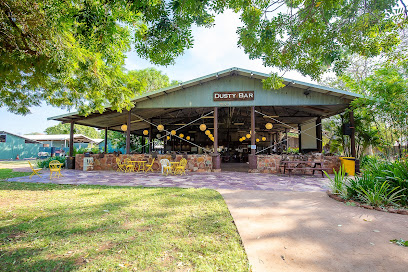
Mirima Rock Formations
Experience the stunning Mirima Rock Formations, an awe-inspiring natural wonder near Kununurra, showcasing vibrant landscapes and unique wildlife.
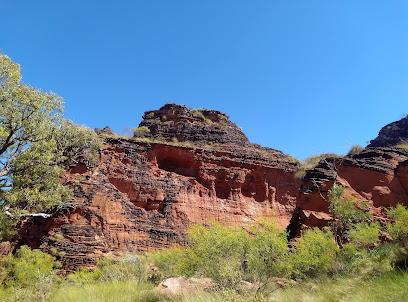
Galjiba (Molly Spring)
Explore the enchanting beauty of Galjiba (Molly Spring) at Lake Argyle, a premier hiking destination in Australia's stunning outback.
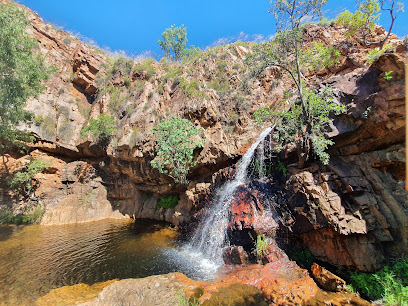
Dimalurru (Tunnel Creek) National Park
Discover the natural beauty and rich cultural heritage of Dimalurru (Tunnel Creek) National Park in Western Australia.
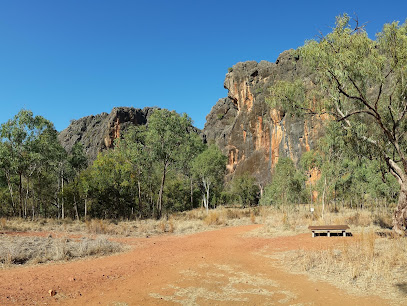
Ellenbrae Station
Embrace the rugged beauty and adventure at Ellenbrae Station, a premier camping ground on the Gibb River Road in Western Australia.

The Bungle Bungles
Discover the stunning geological formations and rich biodiversity of the Bungle Bungles, a UNESCO World Heritage site in Western Australia.
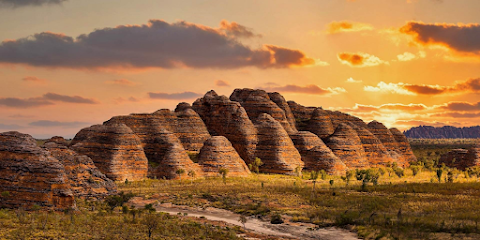
Unmissable attractions to see
Ivanhoe Crossing
Explore the stunning Ivanhoe Crossing in Kununurra, Western Australia - a breathtaking bridge offering picturesque views and rich wildlife experiences.
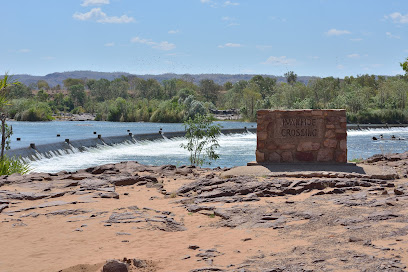
Kununurra Visitor Centre
Explore the stunning East Kimberley region at the Kununurra Visitor Centre, your gateway to adventure and discovery in Western Australia.
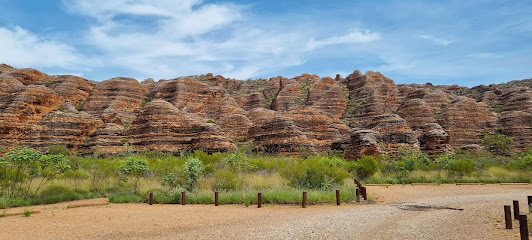
Argyle Homestead Museum
Explore the heritage and beauty of the Lake Argyle region at Argyle Homestead Museum, a must-see for history enthusiasts and nature lovers.
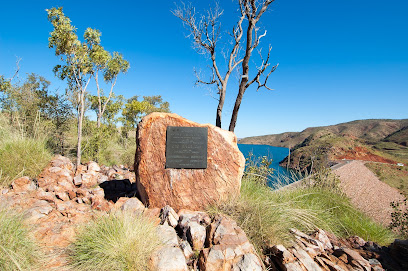
Danggu Gorge National Park
Experience the breathtaking landscapes and diverse wildlife at Danggu Gorge National Park in Western Australia, a perfect escape for nature lovers and adventure seekers.
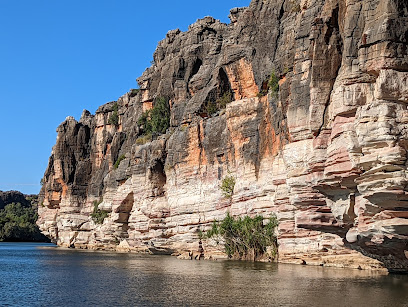
Bandilngan (Windjana Gorge) National Park
Discover the stunning landscapes and rich wildlife of Windjana Gorge National Park, a hidden gem in Western Australia.

Bungle Bungle Caravan Park & Tour Company
Discover the breathtaking Bungle Bungle Caravan Park & Tour Company, your gateway to stunning landscapes and unforgettable adventures in Purnululu National Park.
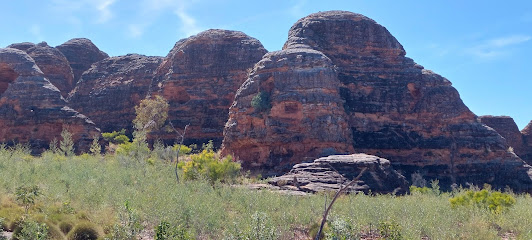
Kelly's Knob / Thegoowiyeng
Discover the stunning vistas of Kelly's Knob in Kununurra, a scenic spot that showcases the breathtaking beauty of Western Australia's landscapes.
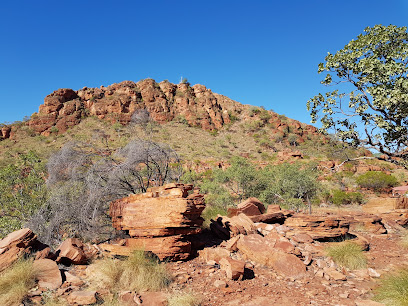
Home Valley Station
Explore the breathtaking landscapes and rich culture of Home Valley Station, your gateway to the Kimberley region's natural wonders.
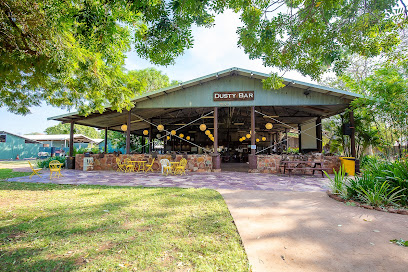
Mirima Rock Formations
Explore the breathtaking Mirima Rock Formations in Kununurra, a stunning natural wonder showcasing Australia's unique geological beauty and rich Indigenous culture.
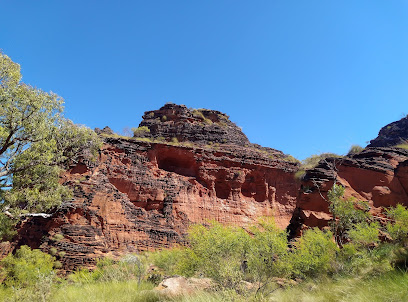
Galjiba (Molly Spring)
Discover the tranquil beauty of Galjiba (Molly Spring), an idyllic hiking destination showcasing nature's wonders near Lake Argyle, Australia.
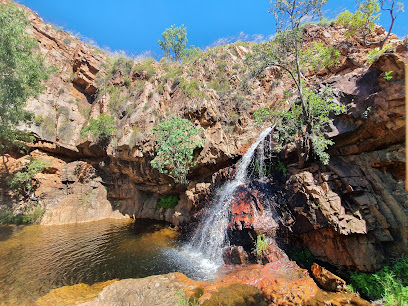
Dimalurru (Tunnel Creek) National Park
Discover the breathtaking beauty and rich cultural heritage of Dimalurru (Tunnel Creek) National Park in Western Australia, a nature lover's paradise.

Ellenbrae Station
Experience the rugged beauty and tranquility of Ellenbrae Station, a premier camping destination on the Gibb River Road in Western Australia.

Mimbi Caves Tours
Discover the enchanting Mimbi Caves, a stunning natural wonder in Western Australia, perfect for adventure seekers and nature lovers.
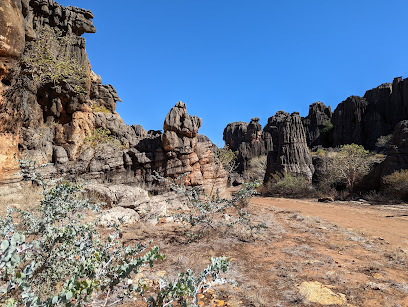
El Questro Wilderness Park - Kununurra Office
Discover the wild charm of El Questro Wilderness Park, where adventure meets nature in the heart of Australia's Kimberley region.

Lake Argyle
Discover the stunning landscapes and vibrant wildlife of Lake Argyle, the breathtaking man-made reservoir in Western Australia that offers adventure and tranquility.
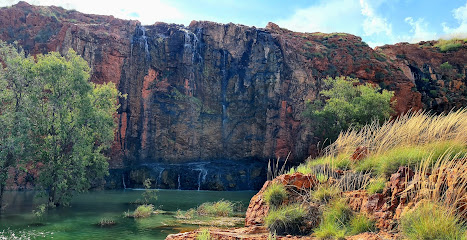
Essential places to dine
Bungle Bungle Caravan Park & Tour Company
Experience breathtaking landscapes and rich Indigenous culture at Bungle Bungle Caravan Park & Tour Company in Western Australia.
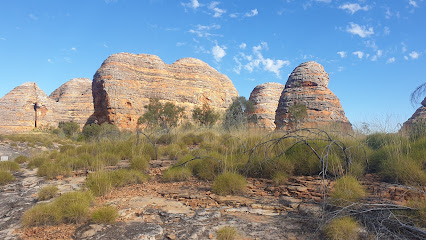
The Bungle Bungles
Explore the breathtaking beauty of The Bungle Bungles in Purnululu National Park - a natural wonder and UNESCO World Heritage site in Western Australia.
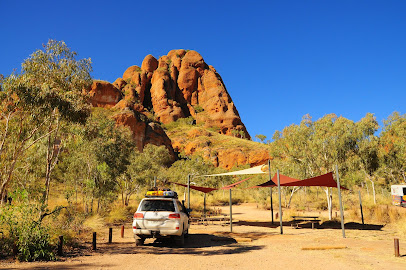
Bungle Bungle Savannah Lodge | Eco Accommodation in Purnululu National Park
Discover eco-friendly luxury at Bungle Bungle Savannah Lodge in Purnululu National Park—where adventure meets comfort in stunning natural surroundings.
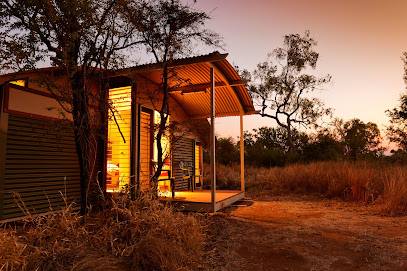
Bungle Bungle Wilderness Lodge
Experience nature's wonder at Bungle Bungle Wilderness Lodge—your gateway to breathtaking landscapes and serene relaxation in Purnululu National Park.

Markets, malls and hidden boutiques
Bungle Bungle Caravan Park & Tour Company
Explore the breathtaking landscapes of Purnululu National Park at Bungle Bungle Caravan Park & Tour Company, offering adventure and relaxation in harmony.

The Bungle Bungles
Discover the breathtaking beauty of the Bungle Bungles in Western Australia, a remarkable natural landmark showcasing unique geological formations and rich Indigenous culture.
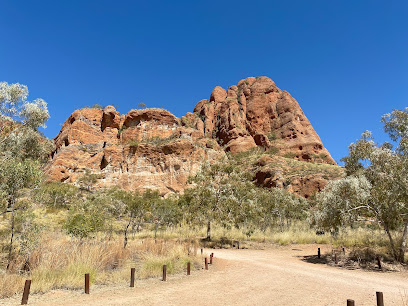
Bungle Bungle Guided Tours | Kimberley Air and Walking Tours
Discover the breathtaking Bungle Bungles with expert-guided tours showcasing stunning landscapes and rich Indigenous culture.
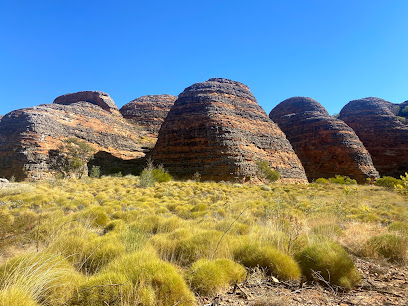
Bungle Bungle Savannah Lodge | Eco Accommodation in Purnululu National Park
Experience the wild beauty of Purnululu National Park at Bungle Bungle Savannah Lodge, an eco-friendly haven for nature lovers.
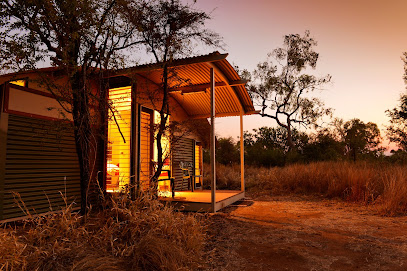
Essential bars & hidden hideouts
Bungle Bungle Caravan Park & Tour Company
Explore the stunning landscapes of Purnululu at Bungle Bungle Caravan Park, your adventure hub for hiking, tours, and relaxation in Western Australia.

The Bungle Bungles
Explore the breathtaking Bungle Bungles in Purnululu National Park, a UNESCO World Heritage Site known for its stunning geological formations and rich Aboriginal heritage.
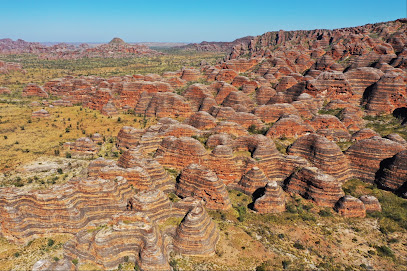
Bungle Bungle Savannah Lodge | Eco Accommodation in Purnululu National Park
Discover the breathtaking beauty of Purnululu National Park at Bungle Bungle Savannah Lodge, your eco-friendly accommodation in the heart of nature.

Bungle Bungle Wilderness Lodge
Discover the breathtaking beauty and luxury of Bungle Bungle Wilderness Lodge in Purnululu National Park, Australia's natural wonder.

Local Phrases about Bungle Bungle Range
-
- HelloG'day
[G'day] - GoodbyeSee ya
[See ya] - YesAye
[Aye] - NoNah
[Nah] - Please/You're welcomeTa
[Ta] - Thank youCheers
[Cheers] - Excuse me/SorrySorry mate
[Sorry mate] - How are you?How ya goin'?
[How ya goin'?] - Fine. And you?Good. You?
[Good. You?] - Do you speak English?You speak English?
[You speak English?] - I don't understandNo idea mate
[No idea mate]
- HelloG'day
-
- I'd like to see the menu, pleaseMenu please
[Menu please] - I don't eat meatNo meat
[No meat] - Cheers!Cheers!
[Cheers!] - I would like to pay, pleasePay please
[Pay please]
- I'd like to see the menu, pleaseMenu please
-
- Help!Help!
[Help!] - Go away!Bugger off!
[Bugger off!] - Call the Police!Police!
[Police!] - Call a doctor!Doctor!
[Doctor!] - I'm lostLost
[Lost] - I'm illSick
[Sick]
- Help!Help!
-
- I'd like to buy...Buy...
[Buy...] - I'm just lookingJust looking
[Just looking] - How much is it?How much?
[How much?] - That's too expensiveToo dear
[Too dear] - Can you lower the price?Lower the price?
[Lower the price?]
- I'd like to buy...Buy...
-
- What time is it?What's the time?
[What's the time?] - It's one o'clockOne o'clock
[One o'clock] - Half past (10)Half ten
[Half ten] - MorningMorning
[Morning] - AfternoonArvo
[Arvo] - EveningEvening
[Evening] - YesterdayYesterday
[Yesterday] - TodayToday
[Today] - TomorrowTomorrow
[Tomorrow] - 1One
[One] - 2Two
[Two] - 3Three
[Three] - 4Four
[Four] - 5Five
[Five] - 6Six
[Six] - 7Seven
[Seven] - 8Eight
[Eight] - 9Nine
[Nine] - 10Ten
[Ten]
- What time is it?What's the time?
-
- Where's a/the...?Where's the...?
[Where's the...?] - What's the address?Address?
[Address?] - Can you show me (on the map)?Show me (on map)?
[Show me (on map)?] - When's the next (bus)?Next (bus)?
[Next (bus)?] - A ticket (to ....)Ticket (to ...)
[Ticket (to ...)]
- Where's a/the...?Where's the...?
History of Bungle Bungle Range
-
The Bungle Bungle Range is deeply significant to the Aboriginal people who have lived in the region for tens of thousands of years. The traditional custodians of the land, the Kija and Jaru peoples, have a rich cultural connection to the area. Their Dreamtime stories and rock art found throughout the range provide a valuable insight into their historic and spiritual relationship with this unique landscape.
-
The Bungle Bungle Range remained largely unknown to Europeans until the 1980s. The first documented European exploration was conducted by surveyor Charles Price Conigrave in 1912. Despite this, the range's dramatic formations remained relatively unexplored and unrecognized by the broader public for many decades.
-
The striking beehive-shaped karst sandstone formations of the Bungle Bungle Range gained widespread recognition in 1982, when airborne surveys revealed their uniqueness. This led to increased interest in the range, eventually culminating in the establishment of Purnululu National Park in 1987 to protect the area’s unique geological and ecological features.
-
In 2003, the Bungle Bungle Range was inscribed on the UNESCO World Heritage List. This designation was in recognition of its outstanding universal value, both for its exceptional natural beauty and its cultural significance to the Indigenous peoples of the region. The listing has helped to ensure the ongoing protection and preservation of this extraordinary landscape.
-
Today, the Bungle Bungle Range is a popular destination for adventurous travelers seeking to explore its rugged beauty. Activities such as hiking, helicopter tours, and camping allow visitors to experience the area's stunning geological formations and rich cultural heritage. The influx of tourism has also provided opportunities for the local Indigenous communities to share their culture and history with a broader audience.
Bungle Bungle Range Essentials
-
The Bungle Bungle Range, located within Purnululu National Park in Western Australia, is remote but accessible. The closest major town is Kununurra, which is approximately 250 kilometers away. From Kununurra, you can drive to the park, but note that the roads can be rough and a 4WD vehicle is highly recommended. Alternatively, you can take a scenic flight from Kununurra or Broome, which offers breathtaking aerial views of the range.
-
Once inside Purnululu National Park, transportation options are limited. Most visitors use 4WD vehicles to navigate the park's rugged terrain. Guided tours are available and often include transportation. There are no public transport options within the park itself, so planning ahead for how you'll get around is essential.
-
Australia uses the Australian Dollar (AUD). While credit and debit cards are widely accepted in larger towns like Kununurra, it's essential to carry cash when visiting remote areas like the Bungle Bungle Range. ATMs are scarce in the region, so ensure you have enough cash for your stay.
-
The Bungle Bungle Range is generally safe, but the remote location means you should take extra precautions. Always inform someone of your travel plans and expected return. There are no specific high-crime areas, but always be cautious with your belongings. The natural environment can be hazardous; watch out for wildlife, stay on marked trails, and carry plenty of water.
-
In case of an emergency, contact local emergency services by dialing 000. Mobile phone coverage can be limited in the park, so consider carrying a satellite phone. First aid kits are essential, as medical facilities are far from the park. The Visitor Centre can provide assistance and information on the nearest medical help.
-
Fashion: Do wear lightweight, long-sleeved clothing to protect yourself from the sun and insects. Don’t wear open-toed shoes; sturdy hiking boots are recommended. Religion: While there are no specific religious customs to observe, do respect the cultural significance of the area to Indigenous Australians. Public Transport: Not applicable within the park, but do follow rules if using transport to get there. Greetings: Do greet fellow travelers and park staff with a friendly 'hello.' Eating & Drinking: Do bring your own food and water, as there are no facilities within the park. Don’t leave any litter behind; follow the 'Leave No Trace' principles.
-
To experience the Bungle Bungle Range like a local, consider taking a guided tour with an Indigenous guide who can offer insights into the cultural significance of the area. Visit during the dry season (April to October) for the best weather conditions and fewer travel disruptions. Early morning and late afternoon are the best times for photography, offering stunning light conditions on the beehive-shaped domes.
Trending Landmarks in Bungle Bungle Range
-
El Questro Emma Gorge Resort
-
Ivanhoe Crossing
-
Purnululu National Park
-
Argyle Homestead Museum
-
Danggu Gorge National Park
-
Bandilngan (Windjana Gorge) National Park
-
Bunjil's Shelter
-
Bungle Bungle Caravan Park & Tour Company
-
Kelly's Knob / Thegoowiyeng
-
Home Valley Station
-
Mirima Rock Formations
-
Galjiba (Molly Spring)
-
Dimalurru (Tunnel Creek) National Park
-
Ellenbrae Station
-
The Bungle Bungles
Nearby Cities to Bungle Bungle Range
-
Things To Do in Alice Springs
-
Things To Do in Suai
-
Things To Do in Same
-
Things To Do in Bobonaro
-
Things To Do in Lospalos
-
Things To Do in Aileu
-
Things To Do in Ermera
-
Things To Do in Baucau
-
Things To Do in Gleno
-
Things To Do in Dili
-
Things To Do in Makassar
-
Things To Do in Bali
-
Things To Do in Port Douglas
-
Things To Do in Cairns
-
Things To Do in Surabaya


